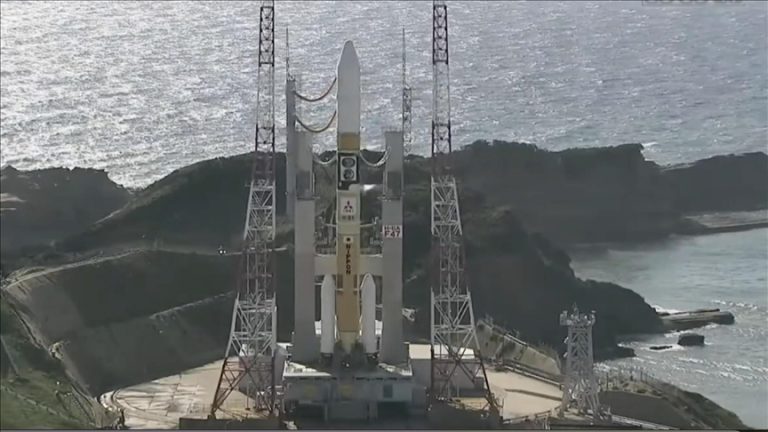Positioning System Upgrade: Japan Launches Satellite for Independent GPS Network
Japan has successfully launched the Michibiki 6 satellite using its H3 rocket, enhancing its Quasi-Zenith Satellite System (QZSS) to improve positioning accuracy for various applications, moving towards greater independence from foreign GPS services.
Summary
- Launch Details: On February 2, 2025, Japan’s space agency, JAXA, successfully launched the Michibiki 6 satellite aboard the H3 rocket from the Tanegashima Space Center.
- Quasi-Zenith Satellite System (QZSS): The QZSS is Japan’s regional satellite navigation system, designed to enhance GPS accuracy in the Asia-Oceania region, particularly over Japan.
- System Expansion: With the addition of Michibiki 6, the QZSS now comprises five satellites, with plans to expand to seven by March 2026 and eleven by the late 2030s, aiming for more precise global positioning without relying on foreign services.
- Applications: The enhanced system will improve positioning data for smartphones, vehicles, maritime navigation, and drones, benefiting various industries and daily activities.
- H3 Rocket Development: The successful launch marks the fourth consecutive successful flight for the H3 rocket, following a previous failed debut, and aims to make Japan’s space transport commercially competitive and bolster national security.
Introduction
In a significant stride towards enhancing its autonomous navigation capabilities, Japan has successfully launched the Michibiki 6 satellite, bolstering its Quasi-Zenith Satellite System (QZSS). This development not only aims to improve positioning accuracy for various applications but also signifies Japan’s move towards reducing reliance on foreign GPS services.
The Quasi-Zenith Satellite System (QZSS)
The QZSS, also known as Michibiki, is a regional satellite navigation system developed by Japan to enhance the United States-operated Global Positioning System (GPS) in the Asia-Oceania regions, with a focus on Japan. The system is designed to provide highly precise and stable positioning services, especially in urban and mountainous areas where GPS signals can be obstructed.
Launch Details
On February 2, 2025, at 5:30 p.m. JST, the Japan Aerospace Exploration Agency (JAXA) successfully launched the Michibiki 6 satellite aboard the H3 rocket from the Tanegashima Space Center in Kagoshima Prefecture. Approximately 29 minutes after liftoff, the satellite was successfully placed into its target orbit.
Enhancing Positioning Accuracy
The addition of Michibiki 6 to the QZSS constellation is expected to significantly improve positioning data for various applications. This includes enhanced accuracy for smartphones, car navigation systems, maritime navigation, and drones. The system’s design ensures that at least one satellite is always near the zenith over Japan, providing a more reliable signal in areas where traditional GPS signals may be weak or obstructed.
System Expansion Plans
Currently, the QZSS consists of five satellites with the inclusion of Michibiki 6. Japan plans to expand this constellation to seven satellites by March 2026, aiming to achieve more precise global positioning capabilities without relying on foreign services. By the late 2030s, the system is expected to comprise eleven satellites, further enhancing its accuracy and reliability.
Applications Across Industries
The enhanced QZSS is poised to benefit a wide range of industries:
- Automotive: Improved navigation systems with higher accuracy, essential for the advancement of autonomous driving technologies.
- Maritime: More precise navigation aids for vessels, contributing to safer and more efficient maritime operations.
- Aviation: Enhanced flight navigation and management systems, leading to improved safety and operational efficiency.
- Agriculture: Support for precision farming techniques, allowing for more efficient resource utilization and crop management.
- Disaster Management: Accurate positioning data to assist in emergency response and disaster relief operations.
H3 Rocket Development
The successful deployment of Michibiki 6 also marks a significant milestone for Japan’s H3 rocket program. This launch represents the fourth consecutive successful flight for the H3 rocket, following a previous failed debut. The H3 rocket is a key component of Japan’s strategy to establish a stable and commercially competitive space transport capability, which is crucial for both its space program and national security.
Table 1: Comparison of QZSS and GPS
| Feature | QZSS (Japan) | GPS (USA) |
|---|---|---|
| Primary Region of Coverage | Japan & Asia-Pacific | Global |
| Number of Satellites | 5 (expanding to 11) | 31 operational |
| Orbit Type | Quasi-Zenith Orbit (QZO) | Medium Earth Orbit (MEO) |
| Accuracy | Higher in urban areas | Varies by region |
| Independence | Aims for self-reliance | Used globally |
Table 2: Key Missions of the H3 Rocket
| Launch Number | Date | Payload | Mission Outcome |
|---|---|---|---|
| 1st (Failed) | March 7, 2023 | ALOS-3 (Earth Observation) | Failure |
| 2nd (Success) | February 17, 2024 | Small Satellites | Success |
| 3rd (Success) | September 2024 | Unmanned Cargo to ISS | Success |
| 4th (Success) | February 2, 2025 | Michibiki 6 (QZSS) | Success |
The successful launch of Michibiki 6 signifies a major advancement in Japan’s efforts to develop an independent and highly accurate satellite navigation system. With plans for further expansion and enhancement, the QZSS is set to provide significant benefits across various industries, contributing to technological innovation and improved quality of life.
Facts
- The term “Michibiki” translates to “guidance” in Japanese, reflecting the satellite’s purpose in providing precise navigation assistance.
- Unlike traditional GPS satellites that orbit the Earth in a medium Earth orbit (MEO), QZSS satellites operate in a quasi-zenith orbit (QZO), ensuring better coverage over Japan.
- Japan plans to fully transition to a standalone QZSS network, reducing dependence on the U.S. GPS system.
- The QZSS is designed to provide an accuracy of up to a few centimeters when combined with ground-based augmentation systems.
- Michibiki 6 is expected to operate for at least 15 years, contributing to Japan’s long-term satellite navigation goals.
References
- Japan Aerospace Exploration Agency (JAXA) – Official Press Release
- Quasi-Zenith Satellite System (QZSS) – Wikipedia
- H3 Rocket Development – JAXA
- History of Japan’s GPS Efforts – SpaceNews
- Comparison of Global Satellite Navigation Systems – ESA

